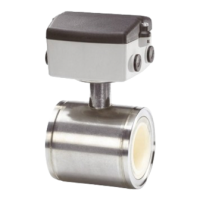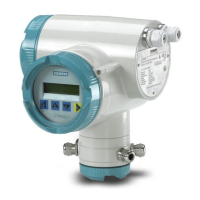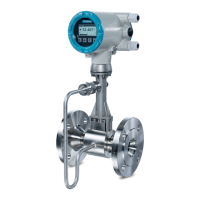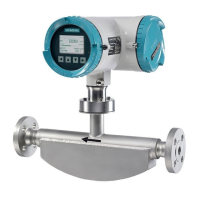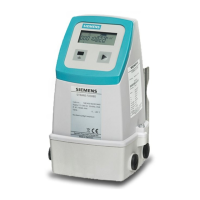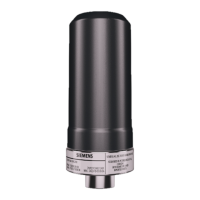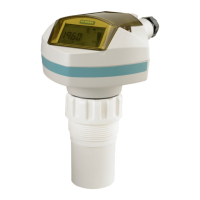5-3
1010ENFM-3B
Section 5
within specifications depends primarily on the receive signal’s signal-to-noise ratio and amplitude. The
information below may point to application conditions that could reduce system performance below its
normally high level.
5.3.5 ACCURACY
Although system accuracy is exceptional over a wide turndown ratio, at extremely low flow rates, a small
zero offset becomes a high percentage of actual flow. Obviously, the ultimate accuracy will be obtained
by performing an on-site flow calibration. A flow calibration can increase system accuracy to between
0.3% to 0.5%, depending on application conditions.
Two common data-entry mistakes may reduce performance. If you enter an incorrect liquid viscosity
value, you could compromise the intrinsic flow profile compensation curve. Incorrectly identifying the
transducers will reduce accuracy. Measured sonic velocity (Vs) errors will usually reveal this problem
and simply returning to the appropriate menu cells, entering the correct values, then repeating the
transducer installation will resolve it.
5.3.6 REPEATABILITY
Some applications require repeatability rather than absolute accuracy. FUE1010EN features excellent
repeatability specifications since its digital “no moving parts” design avoids the adverse effects of hyster-
esis and other wear mechanisms typical of mechanical devices.
5.3.7 DATA STABILITY
Two main factors influence the system’s data stability: Data Scatter and Drift.
Data Scatter
Data scatter is a rapid variation in flow readings (within a span of about 0.1 to 5 seconds). Minimal data
scatter (approximately 0.01 to 0.03 ft/sec) is a natural by-product of digital computation that extracts the
extremely small difference in the up vs. down sonic transit time. Minimal data scatter will not influence
the integrated flow total over periods as short as several minutes. Naturally, it will be a greater percent-
age of the reading when the meter measures extremely low flow rates. Poor liquid sonic conductivity
may attenuate sonic signal to a level that increases data scatter. You should check the signal level (Valc
%) item on the Diagnostic Menu. Usually, this is indicated by a low Valc % value (less than 30).
FUE1010EN does not exhibit inertia since it has no moving parts. In addition, it takes readings ten times
per second. Therefore, it can detect and track very brief flow fluctuations that are beyond the response
capability of some conventional meters. This performance level is required for detecting very fast and
short flow transients or for a fast-response servo control loop application. However, you can use the
damping and slewing controls to smooth the output response if you want the system to ignore rapid flow
fluctuations or data scatter.
Data Drift
Drift is a defined as a long-term cyclical flow deviation resulting from the variation of liquid temperature
or liquid sonic velocity. Drift may be more noticeable when combined with a poor signal-to-noise ratio.
FUE1010EN is carefully designed to minimize the effects of drift. There are no drift-prone analog phase-
locked loop devices in the primary detection circuits. In addition, we use only the most stable plastics or
steel to construct our transducers.
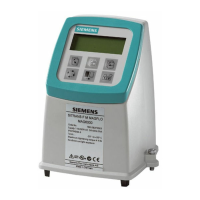
